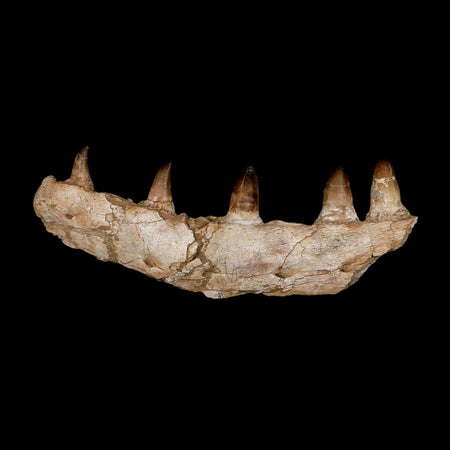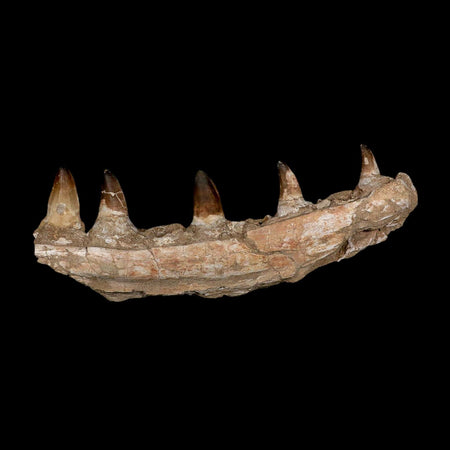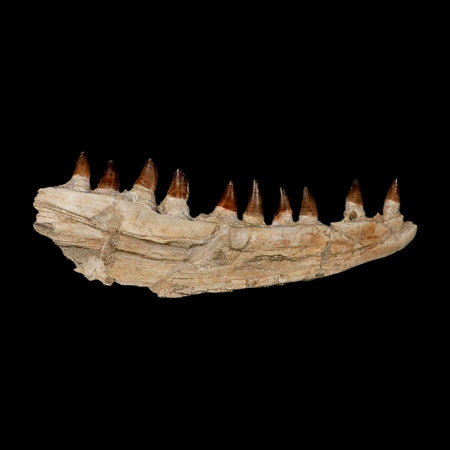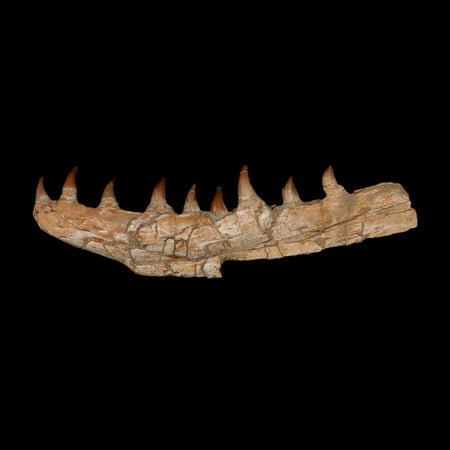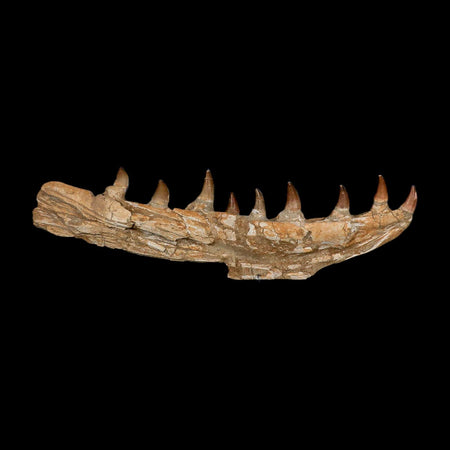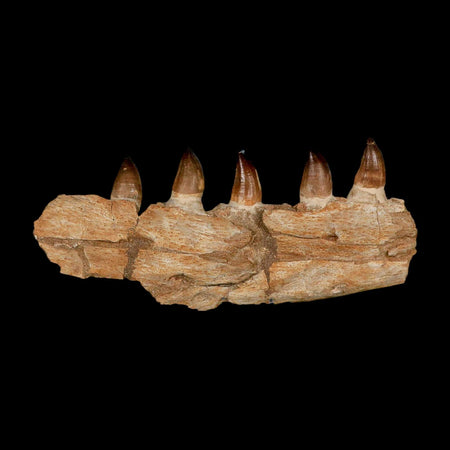5.8" Aidachar pankowskii Fossil Teeth Jaw Section Ray-Finned Fish Cretaceous Age
Location: Oued Zem, Morocco
Weight: 3 Ounces
Jaw Dimensions: 5.8 Inches Long, 1.2 Inches Wide, 0.9 Inches Thick
The item pictured is the item you will receive.
Upper Cretaceous, 100 million to 50 million years ago
Aidachar is an extinct genus of marine ichthyodectiform ray-finned fish that lived during the Late Cretaceous period. The type species, Aidachar paludalis, was discovered in the Kyzyl Kum desert of Uzbekistan. A second species, Aidachar pankowskii, has been identified from the Kem Kem Group of Morocco.
Aidachar pankowskii was initially classified within the genus Cladocyclus but was later reclassified into Aidachar based on phylogenetic analysis. This species is known from the Ifezouane Formation in the Kem Kem beds of Morocco, dating back to the Cenomanian stage of the Upper Cretaceous, approximately 96 million years ago.
The dentary of Aidachar pankowskii shares several characteristics with A. paludalis, including a sinusoidal alveolar border, depressions on the labial side, a deep symphysis, and large teeth. A fragmentary jaw found in Chaaft, Morocco, is tentatively referred to as A. pankowskii. The diet of Aidachar pankowskii is inferred to be that of a voracious predator, based on its general body morphology, jaw anatomy, and the presence of gut contents in related species. The estimated total length of Aidachar pankowskii is about 1 meter, based on comparisons with complete specimens of Cladocyclus from the Santana Formation.
The species Aidachar pankowskii is found in the Kem Kem beds of Morocco, dating to the Cenomanian stage of the Upper Cretaceous.
Please be aware of the nature of fossils:
Being buried under the ground for millions of years under tons of pressure tends to be rough. No fossil comes out of the ground whole and perfect. Most fossils have undergone some restoration, while others are altered by man simply to enhance their presentation in different ways. The workers in Morocco do a very professional job of unearthing and preserving these natural treasures; however, commonly, natural cracks are visible on the surface. These are part of the natural beauty of the fossil and are not considered defects.










